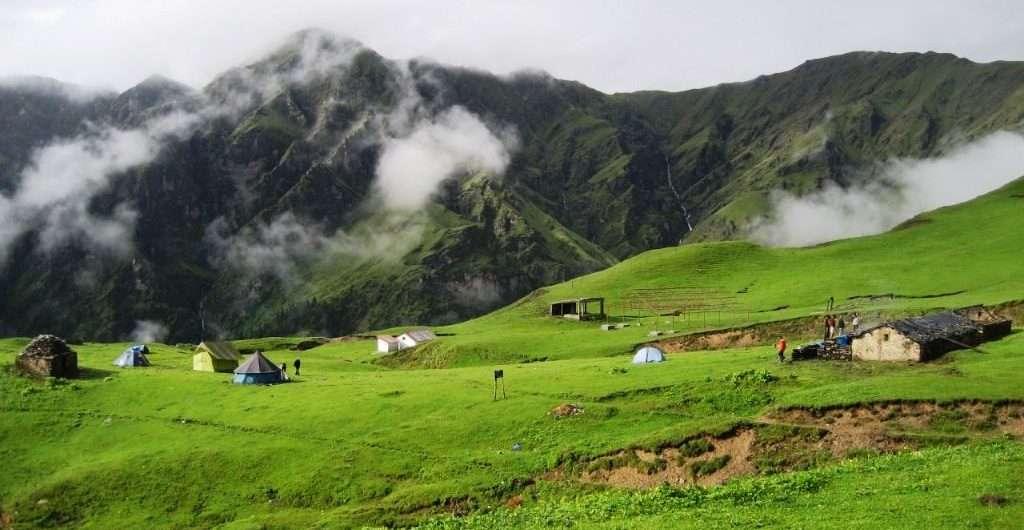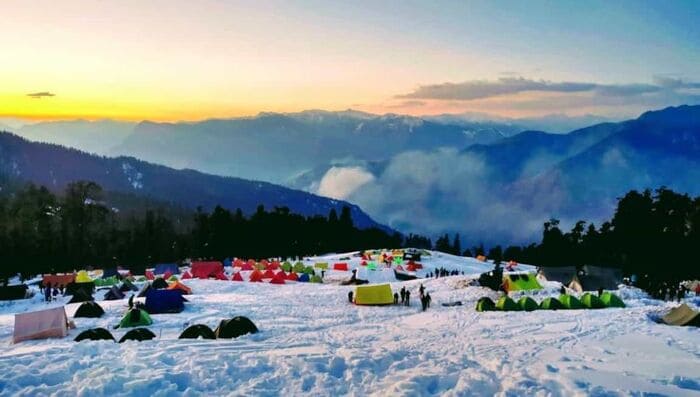
The Dayara Bugyal Trek is a delightful blend of natural splendor and adventure, offering panoramic views of snow-capped peaks, verdant meadows, and dense forests. Located in the Uttarkashi district of Uttarakhand, Dayara Bugyal is one of the most picturesque alpine meadows in India, sitting at an altitude of approximately 3,650 meters (12,000 feet). This trek is an ideal choice for beginners and experienced trekkers alike, promising a mesmerizing journey through the Himalayas.
Why Choose the Dayara Bugyal Trek?
- Stunning Landscapes: The trek features lush meadows, oak and pine forests, and breathtaking vistas of Himalayan peaks like Bandarpoonch, Draupadi ka Danda, and Srikanth.
- Easy to Moderate Trail: The trail is relatively short and manageable, making it suitable for novice trekkers and families.
- Rich Biodiversity: Encounter diverse flora and fauna, especially during the spring and summer months.
- Winter Wonderland: During winter, the meadows are blanketed in
snow, transforming the region into a serene white paradise.

Trek Overview
- Duration: 4-6 days
- Best Time to Visit: March to June (spring/summer) and December to February (winter)
- Starting Point: Raithal or Barsu village
- Maximum Altitude: 3,650 meters (12,000 feet)
- Difficulty Level: Easy to Moderate
Detailed Itinerary
Day 1: Arrival in Raithal/Barsu
Begin your journey with a drive to Raithal or Barsu, quaint villages that serve as the trek’s base camps. Explore the local culture and spend the night in a guesthouse or homestay.
Day 2: Raithal/Barsu to Gui Camp
The trek starts with a gradual ascent through oak and pine forests. Reach the Gui campsite, known for its panoramic views and serene surroundings. Overnight stay in tents.
Day 3: Gui to Dayara Bugyal
This day brings you to the expansive meadows of Dayara Bugyal. Walk through rolling grasslands with the majestic Himalayas as your backdrop. Spend the night camping under a star-studded sky.
Day 4: Explore Dayara Bugyal and Descend to Gui
Spend the day exploring the meadows, enjoying the views of towering peaks and capturing stunning photographs. Later, descend to Gui for an overnight stay.
Day 5: Gui to Raithal/Barsu and Departure
Retrace your steps to the base village. Conclude the trek with a drive back to Uttarkashi or your onward destination.
Preparation and Packing Tips
- Physical Fitness: While the trek is suitable for beginners, basic fitness is essential for enjoying the journey.
- Clothing: Pack layered clothing, including thermals, fleece jackets, and waterproof outerwear.
- Trekking Essentials: Carry a sturdy pair of trekking shoes, a daypack, and trekking poles.
- Winter-Specific Gear: If trekking in winter, include insulated gloves, snow boots, and gaiters.
- Other Essentials: Sunscreen, sunglasses, reusable water bottles, and a first-aid kit.
Responsible Trekking Practices
- Leave No Trace: Carry back all waste and avoid littering.
- Respect Nature: Stay on marked trails and avoid disturbing local flora and fauna.
- Support Local Communities: Choose local guides and homestays to contribute to the region’s economy.
Best Time to Visit
- Spring and Summer: From March to June, the meadows are lush and vibrant, adorned with blooming flowers.
- Winter: From December to February, the trek offers a unique experience as the meadows are covered in a thick layer of snow, making it a winter wonderland.
Conclusion
The Dayara Bugyal Trek is a captivating journey through one of Uttarakhand’s most beautiful alpine meadows. Whether you’re drawn by the verdant landscapes of summer or the snowy vistas of winter, this trek promises an unforgettable experience. With its accessible trails, stunning scenery, and rich biodiversity, Dayara Bugyal is a must-visit destination for nature lovers and adventure seekers.
Pack your bags, lace up your boots, and embark on this enchanting Himalayan adventure. The meadows of Dayara Bugyal await!